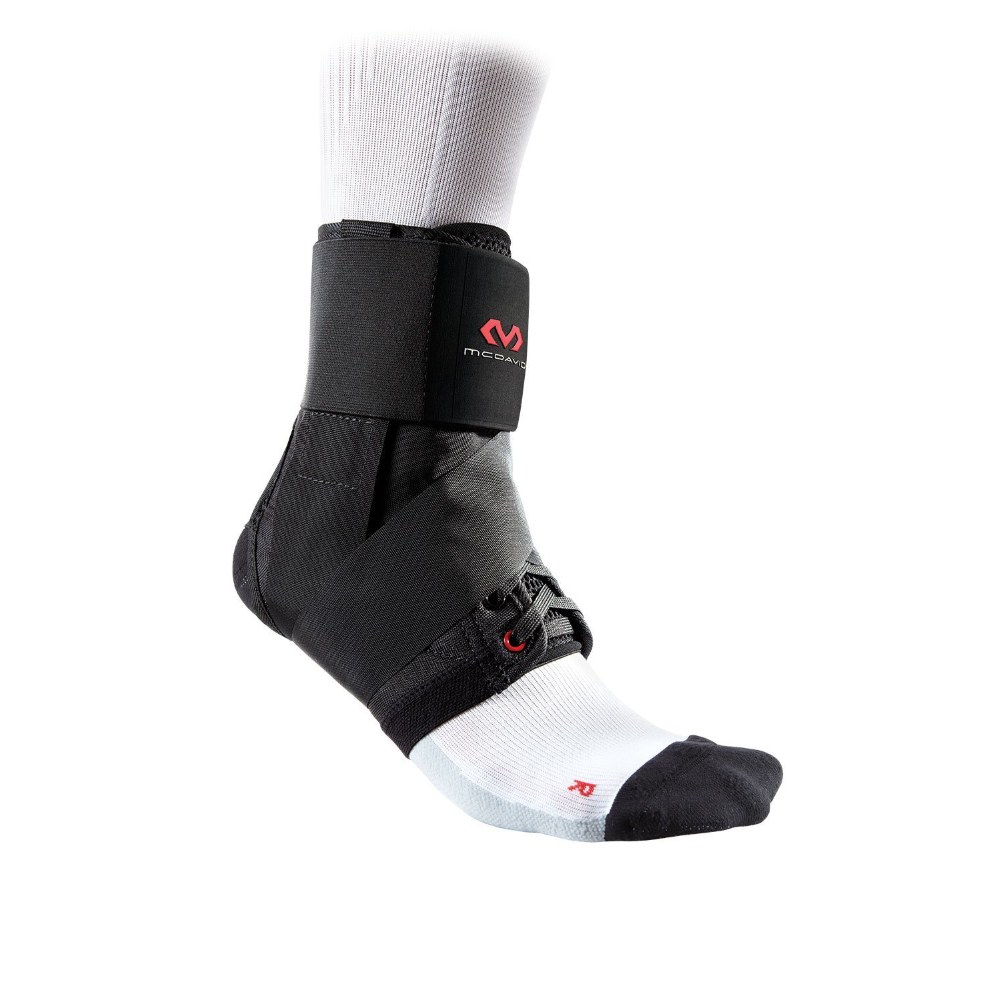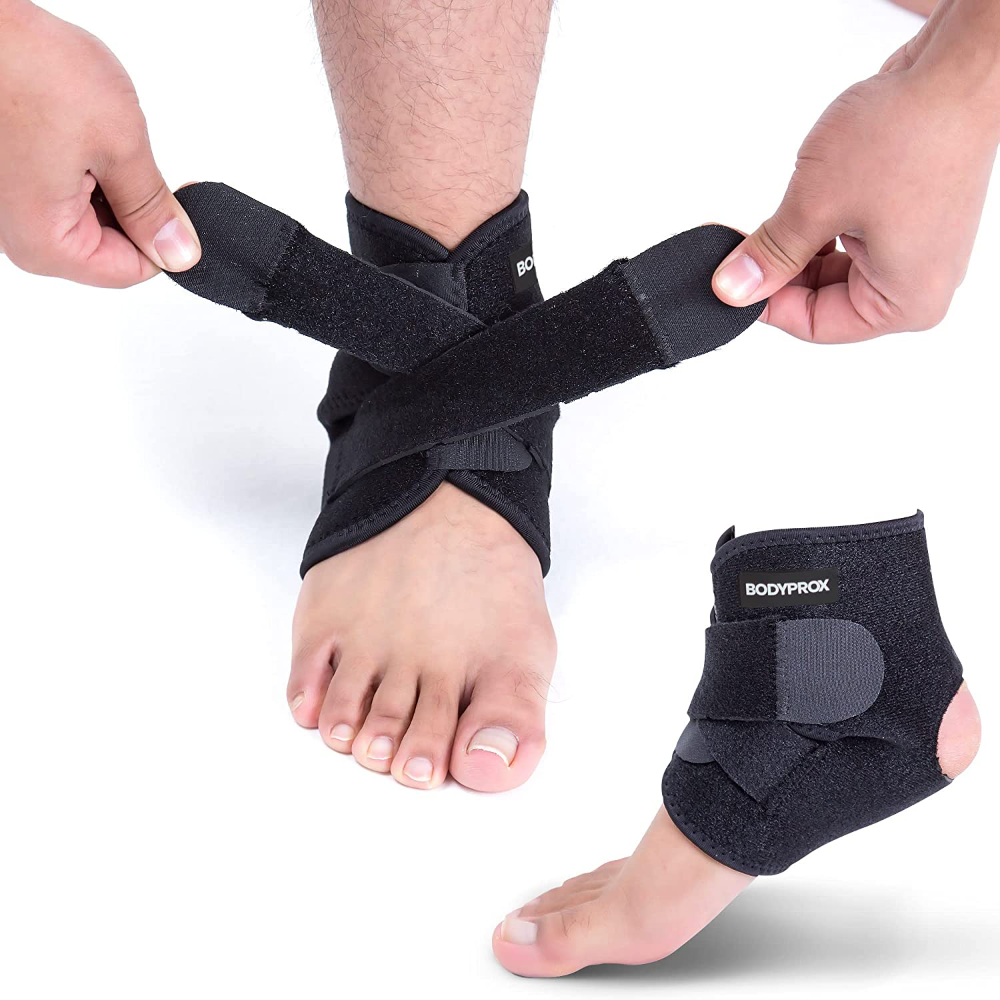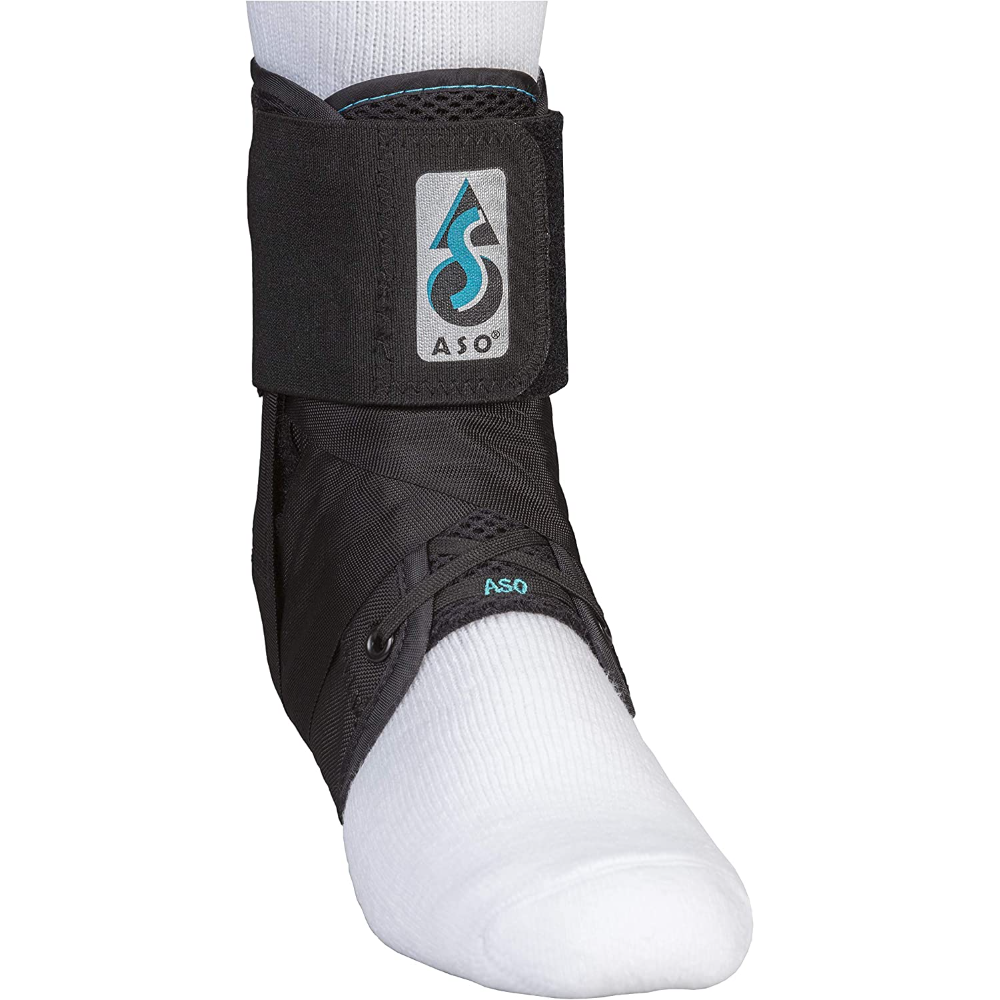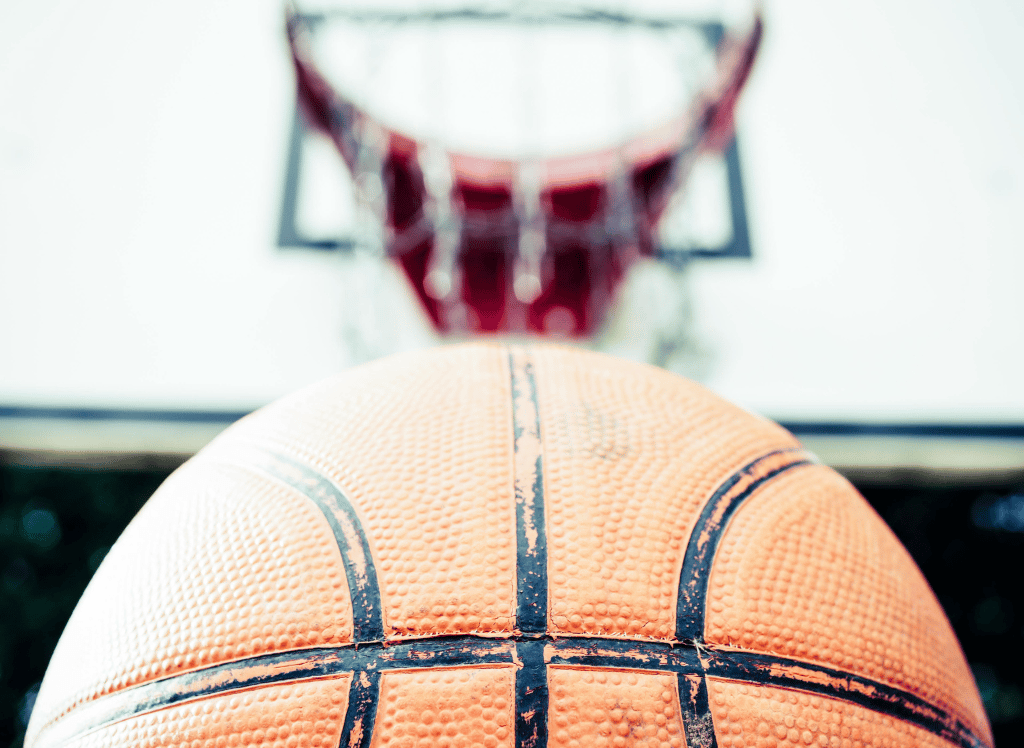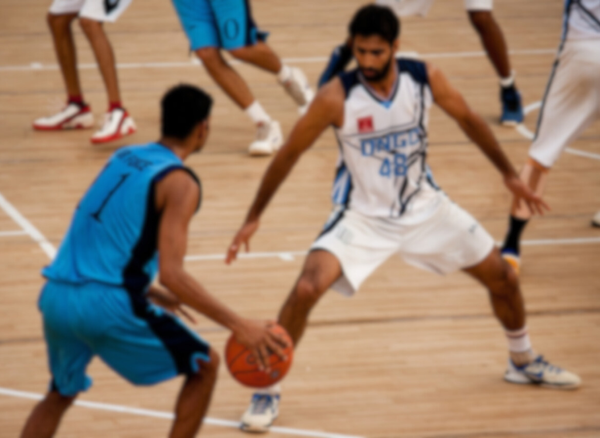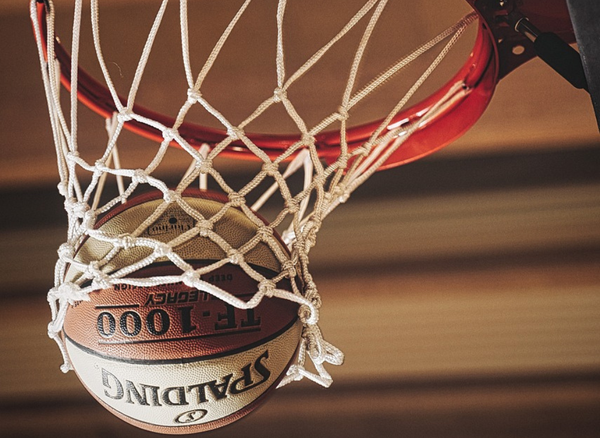Are you a baller who takes no prisoners on the court? You all know what it's like to play hard on the court. But to keep your ankle safe and prevent those nasty rolls from happening, you need an ankle brace to get your game on. And yeah, we know looking after your joints can be boring, so we got you. Check out our dope guide to find the sickest ankle braces on the market. Being sidelined for weeks or months due to injuries is just lame, so let's gear up and protect those ankles. We'll share our 3 favorite ankle braces for basketball players out there.
What you need to know about basketball ankle braces
Ankle injuries can be a real game-changer. The reality is that if you’ve played basketball, you've probably had an ankle injury in the past, you may need a nice ankle brace for protection. Think of it as an insurance policy to protect your ankles and keep you playing hard. Here’s what you need to know when considering whether an ankle brace is needed.
The Benefits of an Ankle Brace for Basketball
Ankle braces are often used to limit ankle movement when playing basketball, which can help reduce the risk of injury.
Additionally, the padding provided by an ankle brace can help relieve pain and soreness during and after playing basketball.
When You Should Wear an Ankle Brace
If you’ve previously sprained or twisted your ankle, wearing an ankle brace can prevent further injury from occurring during high-impact activities like jumping, running, and landing on the court. It feels better to be proactive than reactive—it’s always better to be prepared than suffer another injury due to lack of protection. Additionally, if your doctor has recommended that you wear an ankle brace for any reason, it is important that you follow their instructions closely.
How To Choose an Ankle Brace
When shopping for an ankle brace for basketball, look for one with adjustable straps and a snug fit so that it won't slip off during play. Also, consider whether the material used is breathable—you don't want sweat causing discomfort while playing. Finally, think about how long it takes to put on. If it's too time-consuming, then chances are it won't get worn enough.
How We Choose the Best Ankle Brace for Basketball
If you've sprained your ankle playing basketball like me, you need to find an ankle brace to get back on the court. Ankle sprains are incredibly common, especially among basketball players. A sprain can sideline you for days or weeks. But with the right ankle brace, it doesn't have to. I've read hundreds of reviews to narrow it down to our top 3 ankle braces for ballers like you. These braces will help protect your ankle from future injuries and allow you to get back on the court as quickly as possible.
🏅 McDavid Level 3 Ankle Brace with Straps
❤️ why we love this brace
The McDavid Level 3 Ankle Brace! This high-performance ankle brace is designed to give you maximum protection from ankle injuries and provide comfortable compression as well.
The McDavid Level 3 Ankle Brace features an adjustable closure design for a perfect fit, allowing you to customize your support needs based on your activity level. Plus, it's been tested to provide more than four times more stability than tape and ace bandages without sacrificing your range of motion. With its ultra-lightweight profile and secure fit, this brace allows you to stay active like never before – even during the most intense conditions.
Providing excellent comfort and support, the McDavid Level 3 Ankle Brace helps prevent sprains, joint instability, and other uncomfortable conditions. Plus, if you’re looking for an extra measure of comfort while wearing it, simply add a thicker sock over top - as per its instructions – for full coverage that won't slip or come undone all day long.
🏀 features
Ankle sprains can be a major pain—literally! But with the Mcdavid 195 Ankle Brace, you can make sure that your ankles stay in tip-top condition. Supporting its design with a figure-6 strapping pattern, which simulates athletic tape, you can find a secure and compressible fit for your feet. On top of that, this brace adjusts without requiring any unlacing or removal of the shoe, so your look won't be compromised. And with its breathable ventilated tongue and comfortable padded lining reinforcing closures for added comfort, you don't have to worry about having sweaty feet either! Plus, an independent study at a major university showed that athletes wearing the Mcdavid Ankle Brace had 3x fewer injuries compared to those without it. So be proactive and keep your ankles healthy and supported wherever you go. With the Mcdavid Ankle Brace, no need to worry about spraining those ankles.
🥈 Bodyprox Ankle Support Brace
❤️ why we love this brace
Stop your search and settle in with Bodyprox Ankle Brace! Comfort has never looked so good - this neoprene sleeve keeps air circulating, while adjustable straps wrap up tight. Now you can stay on the court longer without worrying about pesky sprains getting in the way of progress.
🏀 features
Looking for an ankle brace that can keep up with your active lifestyle? Look no further than the Bodyprox Ankle Support Brace! This brace is designed to protect your ankle and minimize the risk of injury, with an innovative open heel design that allows for a wide range of motion during activity. It's perfect for those dealing with both chronic and acute ankle injury symptoms, providing relief from pain associated with conditions like plantar fasciitis. Made from breathable neoprene material that retains heat and prevents skin irritation, this brace is comfortable, flexible, and durable. So, whether you're hitting the gym or taking on the great outdoors, the Bodyprox Ankle Support Brace is the perfect companion to help speed up the healing phase and keep you on your feet.
🥉 Med Spec ASO Ankle Stabilizer
❤️ why we love this brace
The Med Spec ASO Ankle Stabilizer is the perfect choice for keeping your ankles supported no matter what sport or activity you’re engaging in. Crafted with high-quality nylon, this ankle brace is made in the USA and designed to provide superior durability and strength. The stabilizing straps form a complete figure-eight to protect and support your ankle while the CoolFlex Achilles pad and tongue offers comfort and breathability. Plus, these braces come in a bilateral design so each size fits either a left or right foot with a low profile to fit any kind of shoe. Whether you need extra stability for basketball, running, or another sport, these ankle braces will offer reliable support for years to come.
🏀 features
Don't let an ankle injury keep you from the game. The Med Spec ASO is the go-to choice for professional and collegiate athletes, as well as the top minds in sports medicine. This ankle brace offers a unique combination of comfort, support, and durability that can't be found in any other ankle support. Unlike other braces, the contoured tongue provides an exceptional fit, and the boot is constructed of lightweight and durable CoolFlex™ material. Could you ask for anything more? Well, how about increased comfort in the Achilles area thanks to the material lining the inside back of the boot? The ASO is one of the leading ankle braces on the market, and it's the only choice for anyone serious about staying healthy and competing at the highest level.
Basketball Ankle Brace FAQs
Ankle injuries are the most common injury in basketball. If you've ever sprained your ankle, then you know how debilitating it can be. Not being able to play basketball or even walk can be frustrating. The best ankle brace for basketball is the answer to your prayers. This ankle brace will help stabilize your ankle and protect it from future injuries. Here are the most frequently asked questions about ankle braces.
What are the different levels of ankle sprains?
Grade 1 is classified as a mild sprain and it involves only minor stretching and/or tearing of the ligaments that support your ankle joint. It typically does not involve any significant swelling or discoloration and you may still be able to bear weight on your injured foot. The healing process for Grade 1 can take up from two to four weeks if properly treated via rest, ice, compression and elevation (RICE).
Grade 2 is considered a moderate sprain where some ligament fibers have been partially torn which results in greater instability than a Grade 1 sprain but usually will still allow you to walk somewhat normally although with decreased range of motion. Swelling is often more pronounced here as well as bruising around the area due to bleeding under the skin caused by tear in capillaries when ligaments are stretched beyond their normal limits. The recommended RICE treatment holds true here but since there has been greater damage done to muscular tissue it can take anywhere between 3–8 weeks before full recovery occurs depending on various factors including intensity of strain/tear and response rate for each individual’s body type/constitution among other things.
Grade 3 represents a severe sprain where several or all ligament fibers have been completely ruptured causing significant instability within the ankle joint along with significant swelling that appears immediately following injury thus immobilization is strongly recommended so as not displace any parts (i.e bones) inside joints from misalignment due extreme range of motion being sought out unexpectedly during heel strike activities like running or jumping etc.). Healing times vary between 4–12 weeks depending on how effective the RICE protocol is applied by patient for longest period possible without causing further damages due over-exertion prematurely too soon after initial trauma event occurred in first place that led directly into this condition occurring thankfully this time around.
What are the benefits of wearing ankle braces while playing basketball?
Wearing ankle braces while playing basketball has numerous benefits that can help enhance your performance, reduce your risk of injury, and improve your overall comfort. Ankle braces are designed to provide support and stability for the ankle joint, helping to prevent lateral sprains and other injuries associated with intense physical activity. Not only do these braces help prevent injuries but they also help you increase your mobility on the court by allowing you to quickly change directions while still providing a secure foundation. Additionally, they can reduce fatigue in the foot, leg, and lower back muscles as they absorb some of the pressure placed on them during an athletic game like basketball.
Moreover, wearing ankle braces also provides compression which helps relieve pain or swelling caused by overuse or a previous injury. For people who have had an anterior ligament sprain before playing sports like basketball often benefit from additional support provided by Ankle Braces as it keeps their feet properly aligned during movement thus helping protect their fragile ankles from further damage or re-injury. Lastly, because ankle braces come in different sizes and shapes with adjustable straps that ensure a good fit for each user this allows them to customize their level of support according to what best suits their individual needs both during practices or on gamedays.
How do ankle braces help to prevent injuries?
Ankle braces have been used for years to help reduce the risk of sprains and other injuries. They can be worn either as a preventative measure or following an injury, when rehabilitative activities are necessary.
Ankle braces provide compression, warmth and stability to the joints through their neoprene material and adjustable buckles. The compression helps reduce swelling while providing support to the muscles, ligaments, and tendons in your ankle joint to help alleviate pain or discomfort. It also prevents overextension of the ankles while allowing you to maintain mobility without compromising range of motion.
The warmth provided by neoprene also encourages circulation which further aids in healing any minor strain or sprain that may occur during activity as well as providing comfort throughout wear time. Most importantly, however, is that ankle braces provide additional stability around your tendon and ligament areas – reducing their likelihood of overstretching (which causes micro-tearing). This ensures quicker recovery times thanks to less damage caused from excessive movement than if no brace was worn at all!
Most importantly though is that research has shown wearing an ankle brace during physical activity can actually prevent many injuries from happening altogether! It provides extra high levels of protection against rolling your foot inwards – which often leads to a twisted ankle or sprained ligament – when running on uneven terrain or engaging in sports-related activities such as soccer or basketball etc., making it particularly valuable for athletes looking for better safety measures against these types of accidents! However even casual hikers would benefit greatly too - giving them peace of mind on those longer treks knowing they’ll reach their destination without injury worries looming above them!
How do I choose the right size ankle brace?
When selecting an ankle brace, it is important to consider factors such as body shape, weight, activity level, and condition being treated.
If you are buying a brace for everyday use or support during physical activities such as running or sports, you should measure your ankle circumference at the widest point using a soft measuring tape. This helps determine which size bracket your foot falls into: small (less than 11 inches), medium (11-12 inches), large (12-13 inches), extra large (13-14 inches). Additionally, when choosing a sleeve style brace with adjustable straps and closures for more active needs, look for one that has adjustable tabs on both sides of the front panel that allow minor adjustments around the calf if needed.
The material also matters when choosing an ankle brace; breathable materials like neoprene will keep your feet cool while padded closures provide additional comfort. If you have swelling in your ankles due to injury or medical condition like edema or rheumatoid arthritis (RA), look for features like seamless construction that reduce irritation and pressure points over sensitive areas of skin while still providing optimal levels of compression.
Most importantly though is finding an ankle bracelet that suits your individual needs—so be sure to try several models on before making final selection! Also consult with orthopedist if dealing with chronic pain conditions to find out what type of brace might suit best for optimal relief!
How do I put on an ankle brace?
Start by orienting it correctly. The back of the brace should be facing outward with the laces at its center. If a figure 8 strap is included in your particular model then it should be positioned over top of your Achilles tendon before continuing.
Next, pull up one side until the heel cup area closely fits against your foot's inner surface while still allowing a bit of space between them so that you don’t feel too uncomfortable or restricted when wearing it. You may need to adjust both sides individually until they fit properly; if so, use a mirror as a guide so you can make sure each side looks even and symmetrical when wearing the brace fully tightened up.
Once both sides are roughly fitted snugly around your ankles (but not overly tight!), carefully wrap the elastic straps starting from near your toes up towards either end of its sole plate portion - which covers below your foot's arch - ensuring that it crosses itself evenly along both sides with even tension across each strap portion before tightening them further by securing their Velcro fasteners together tightly but comfortably around either side within convenient reach above either end of this plate section near where it fastens onto your calf muscle region in order for optimal coverage and stability movements upon sudden change in direction or terrain grade level shifts during activities such as running or hiking outdoors since our feet usually move differently depending upon these various conditions among other factors like how different types shoes affect them etc..
Finally, once securely fitted ensure that all parts are secured firmly yet comfortably figured out to where there shouldn't be any restrictions made to allow normal ranges motion/flexibility especially on areas prone for injury during these sorts activities such as turning ones leg/ankle outward away from bodyward pressure motions often seen occurring due improper fitting techniques when putting these braces on without taking into account proper measurements while sizing them accordingly beforehand prior usage etc...
How do I take care of my ankle brace?
Here are some tips for taking care of your ankle brace:
1. Wash regularly – It’s important to keep the inside of your ankle brace clean by washing it regularly with a mild soap and warm water after each use. This will help prevent bacteria from accumulating on the fabric, which can cause skin irritations. Additionally, make sure there are no tears or wear-and-tear on the material before putting it back on again.
2. Avoid direct heat – When not in use, never store your ankle brace near direct sources of heat such as radiators or fireplaces as this can weaken its structural integrity over time and lead to premature wear-and-tear on the material itself. Also avoid storing it in cold places like a refrigerator which can also have negative effects on its longevity and stability when in use.
3. Keep away from sharp objects – Make sure that any sharp objects are kept away from where you’re wearing or storing your ankle brace so as to prevent any potential damage that could occur if they were accidentally dropped onto it or rubbed against its surface area.
What are some common ankle injuries in basketball?
Ankle injuries are one of the most common injuries in basketball. Each year, millions of players suffer ankle sprains and strains, either due to poor technique or just plain bad luck.
Ankle sprains occur when one or more ligaments that connect your foot bones become damaged from over-stretching. This is usually caused by sudden changes in direction, such as during a crossover move or a jump stop. Symptoms can range from mild to severe and include swelling, bruising, stiffness, pain and instability around the ankle joint. Recovery time for this type of injury varies depending on the severity but can take up to several weeks if not treated properly with rest and physical therapy exercises.
Lateral ankle sprains are among the most common basketball injuries because players often push off their outer edges while running upcourt or rapidly changing directions on defense against an opponent's drive towards the basket. These types of twisting movements put a lot pressure on that part of your foot causing subtle tears in ligaments which increase your risk for chronic instability within the joint itself leading to further damage down the line if left untreated..
IT band syndrome is also another form of injury commonly seen among basketball players who experience tightness along their lateral leg muscles resulting from excessive use without proper stretching before games/practices started this then affects knee movement where you could be feeling popping sensations when playing very physically demanding sports like Basketball
What are some types of ankle sprains?
Ankle sprains occur when the ligaments that connect bones to each other in the ankle joint become stretched or torn, usually as a result of an abrupt twisting motion of the foot. There are three types of ankle sprains:
• Anterior Talofibular Ligament (ATFL) Sprain: This is the most common type and occurs on the outside part of your ankle. It happens when you roll your ankle too far outward, stretching or tearing apart fibers in either the ATFL or calcaneofibular ligaments. The outer part of your ankle will swell up and become painful, while mobility may be restricted.
• Calcaneal Fibular Ligament (CF) Sprain: Also known as a “high” sprain, this type affects both inner and outer parts of your ankle. A CF sprain can occur due to landing awkwardly on one leg after jumping, or overstretching when running with sudden changes in direction. You may experience pain and swelling at both sides of the joint if you have this type of sprain.
• Posterior Tibialis (PT) Sprain: This is less common than ATFL and CF sprains but it can still cause significant dysfunction if not treated properly. It occurs from an inward twist on the heel—eversion—which stretches out tissues in what's known as your posterior tibiofibular ligament located near your calf muscle region near where it attaches to your shinbone.. Your heel area might look bruised afterwards because this specific injury requires more force than others do to reach tendons deep within its muscles layers.. Swelling could also increase quickly following PT strain; however you won't notice much pain until intense activity is used afterward again unless proper treatment is administered soon after its initial occurrence..
Best Ankle Braces for Basketball
Whether you’re just starting out in basketball or you’ve been playing for years, we hope our list of the ankle braces has helped you find the right one for your needs. Remember to always consult with a doctor before using any type of ankle brace and be sure to follow the specific instructions that come with your purchase.
Good luck on the court!
Some of the links on this website may generate an affiliate commission, at zero cost to you. As an Amazon Associate, we earn from qualifying purchases. Your subscription and associate links helps make this site possible; and allows Gold Medal Ratings to exist. Thank you!





